|
Le calcul des tresses
Collection "Nano", xii+212 pages Les tresses servent-elles uniquement à faire de belles coiffures et de jolis dessins, ou recèlent-elles aussi une structure cachée digne d'intérêt? Comme la formulation le laisse deviner, le but de ce petit livre est de montrer qu'il existe toute une théorie des tresses, fondée sur des intuitions venues de la topologie, de l'algèbre, et de la géométrie, et se prolongeant en de multiples ramifications avec même des applications possibles en cryptographie. Un accent particulier est mis sur les aspects effectifs et la construction d'algorithmes qui constituent un véritable calcul des tresses, à la fois semblable et très différent de celui des nombres. |
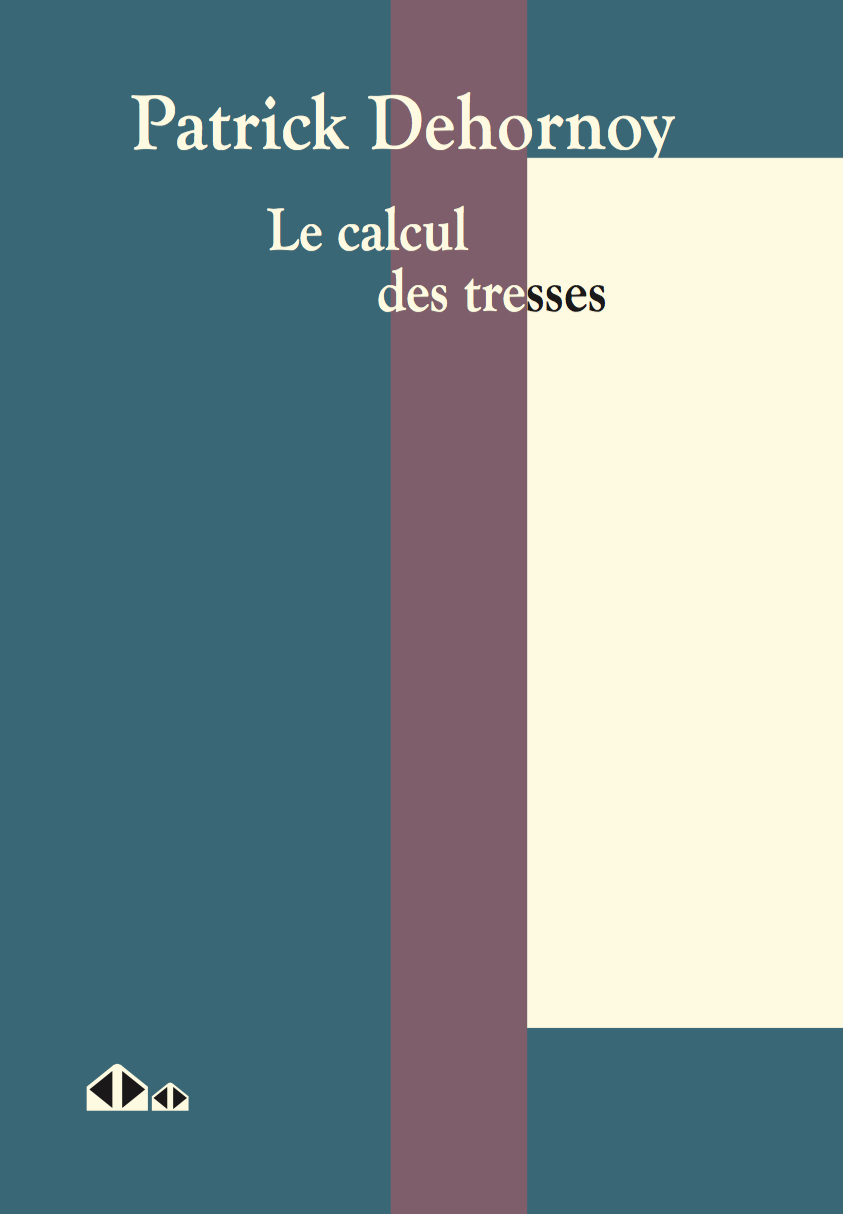
|
|||||||||||||||||||||||||||||||
|
|
||||||||||||||||||||||||||||||||
|
|
||||||||||||||||||||||||||||||||
|
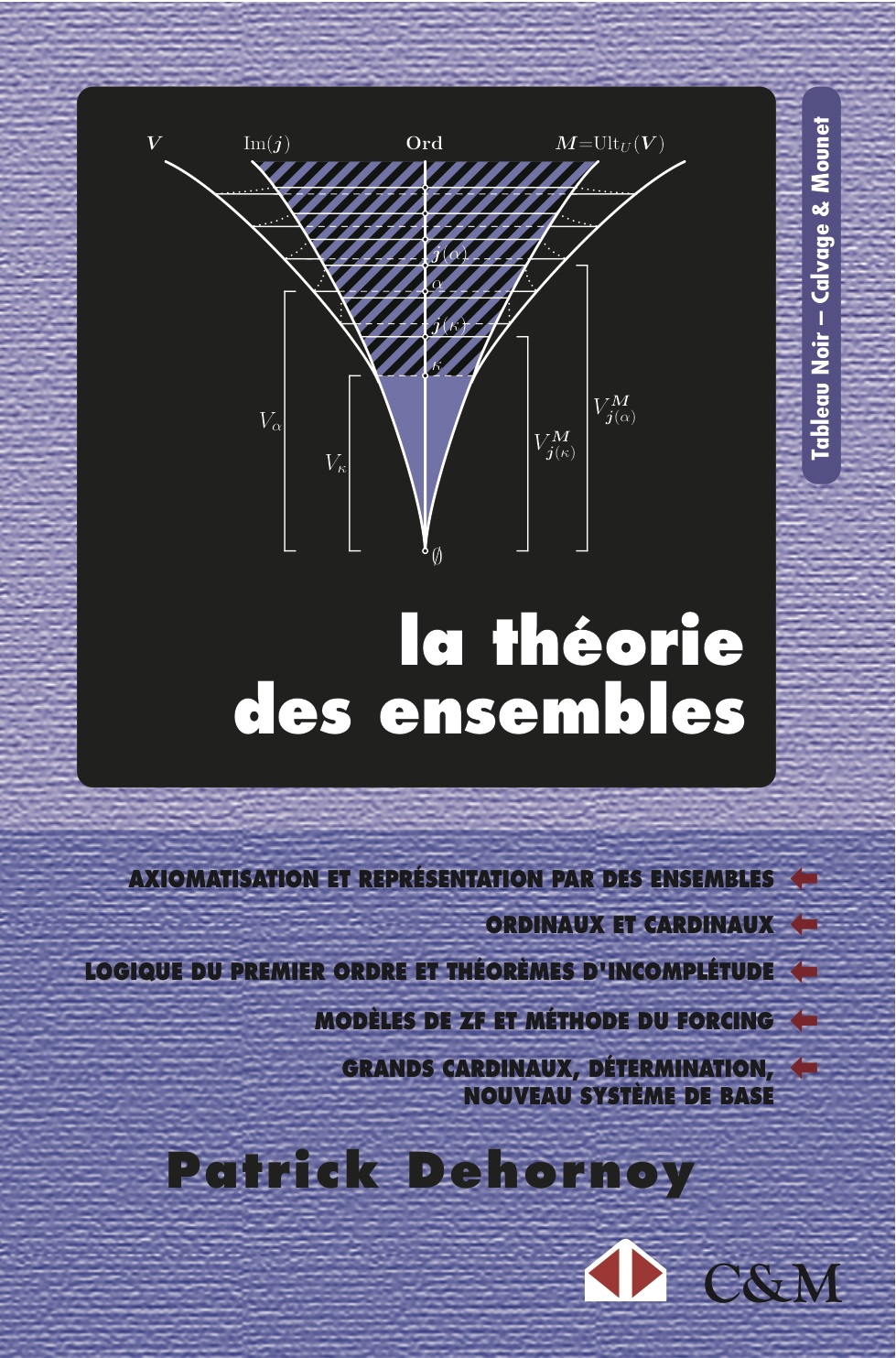
|
|
Foundations of Garside Theory
with François Digne, Eddy Godelle, Daan Krammer, and Jean Michel
EMS Tracts in Mathematics, volume 22, xviii + 690 pages EMS Monograph Award 2014 The Garside structure of braids consists of the algebraic properties underlying their decompositions into fractions and the associated normal forms. It turns out that similar structures occur in various frameworks. The aim of the text is to elaborate a unified theory for such structures and, more generally, to develop what can be called Garside methods in the many situations of algebra, geometry, and low-dimensional topology where they are relevant. The pdf of the final text is freely accessible here: pdf file. A few addenda (corrections, skipped proofs, solutions to selected exercises) are available here: pdf file, as well as on arXiv:1412.5299.
|
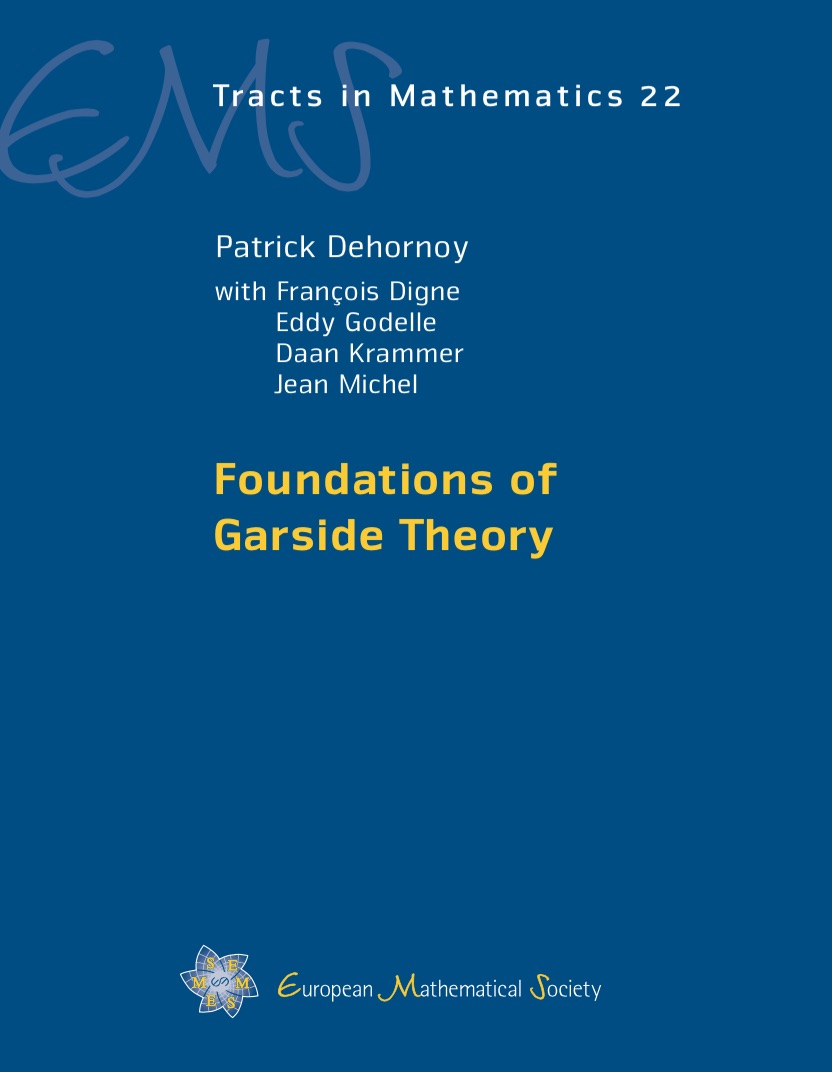
|
|
Ordering Braids
with Ivan Dynnikov, Dale Rolfsen, and Bert Wiest
Surveys and Monographs vol. 148; ix + 321 pages The present volume follows a book, "Why Are Braids Orderable?", written by the same authors and published in 2002 by the Société Mathématique de France. We emphasize that this is not a new edition of that book. Although this book contains most of the material in the previous book, it also contains a considerable amount of new material. In addition, much of the original text has been completely rewritten, with a view to making it more readable and up-to-date. Introduction + contents: pdf file (16 pages, 140 Ko).
|
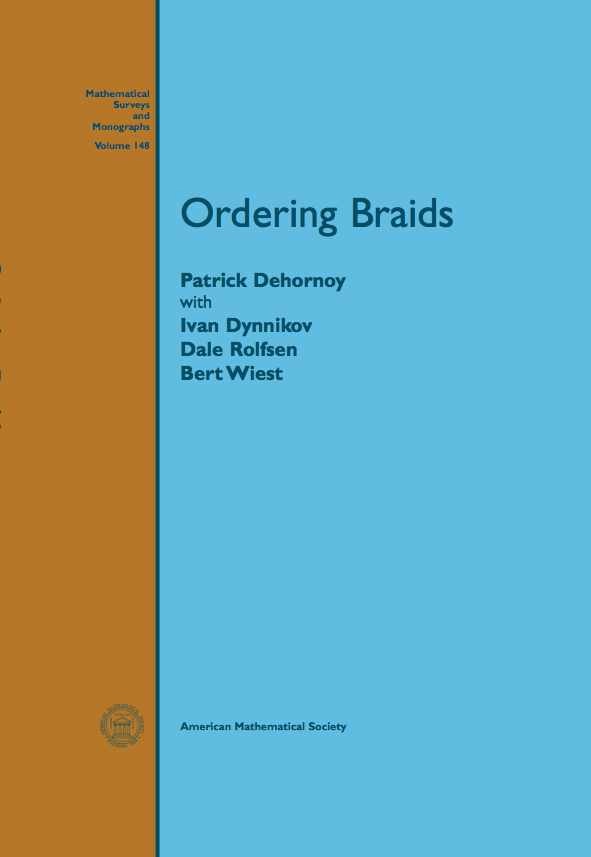
|
|
Why Are Braids Orderable?
with Ivan Dynnikov, Dale Rolfsen, and Bert Wiest
Panoramas et synthèses n. 14; xiii + 192 pages In the decade since the discovery that Artin's braid groups enjoy a left-invariant linear ordering, several quite different methods have been applied to understand this phenomenon. This book is an account of those techniques, including self-distributive algebra, finite trees, combinatorial group theory, mapping class groups, laminations and hyperbolic geometry. Introduction + contents: pdf file
|
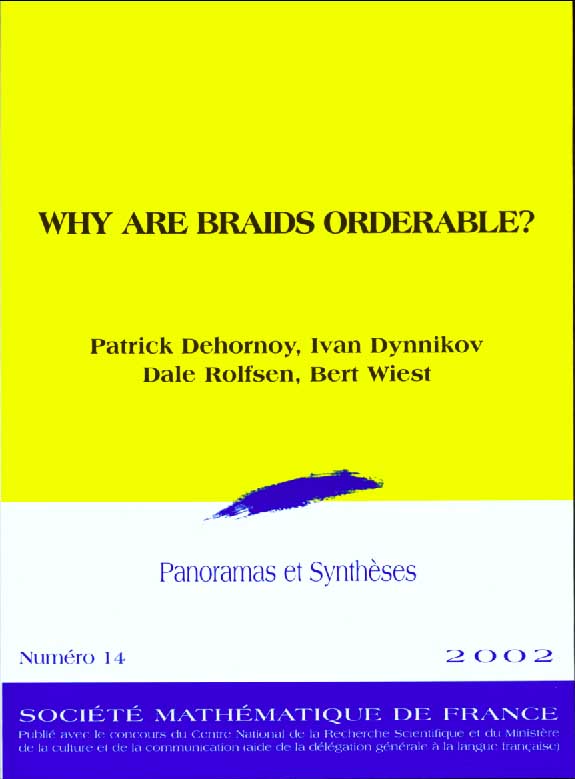
|
|
Braids and Self Distributivity
Progress in Mathematics, volume 192; xvi + 624 pages Ferran Sunyer i Balaguer Prize 1999 The aim of this text is to give a first synthesis of recent works that connect Artin's braid groups and left self-distributive algebra, defined as the study of those algebraic systems that involve a binary operation satisfying the left self-distributivity identity x(yz)=(xy)(xz). The emphasis is put on the geometric features, as illustrated in the slogan: "The geometry of braids is a projection of the geometry of left self-distributivity". The text is an introduction to four objects, which had never been considered twelve years ago, but which have such simple definitions and such rich properties that they seem to deserve some attention. These objects are:
Table of contents, preface, introduction of the chapters: pdf file
|
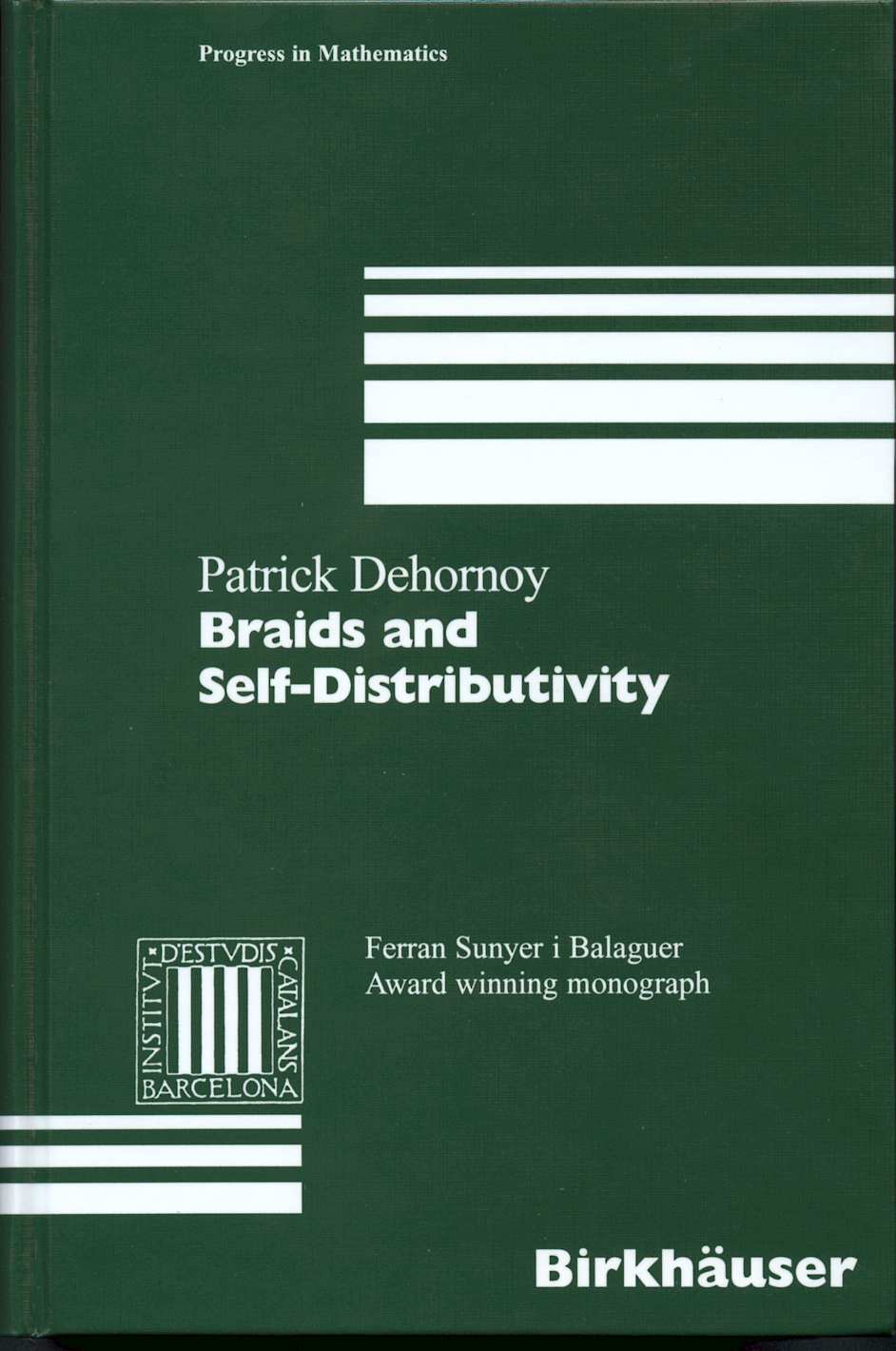
|
|
Mathématiques de l'informatique
Cours et exercices corrigés Collection Sciences Sup; xiii + 302 pages Centré sur les notions de calcul et de définition, ce cours est une introduction à l'étude des structures mathématiques sous-jacentes à l'informatique. Les principaux développements concernent les automates, les langages algébriques, la calculabilité effective et la complexité des algorithmes, la logique booléenne et les logiques du premier ordre.
|
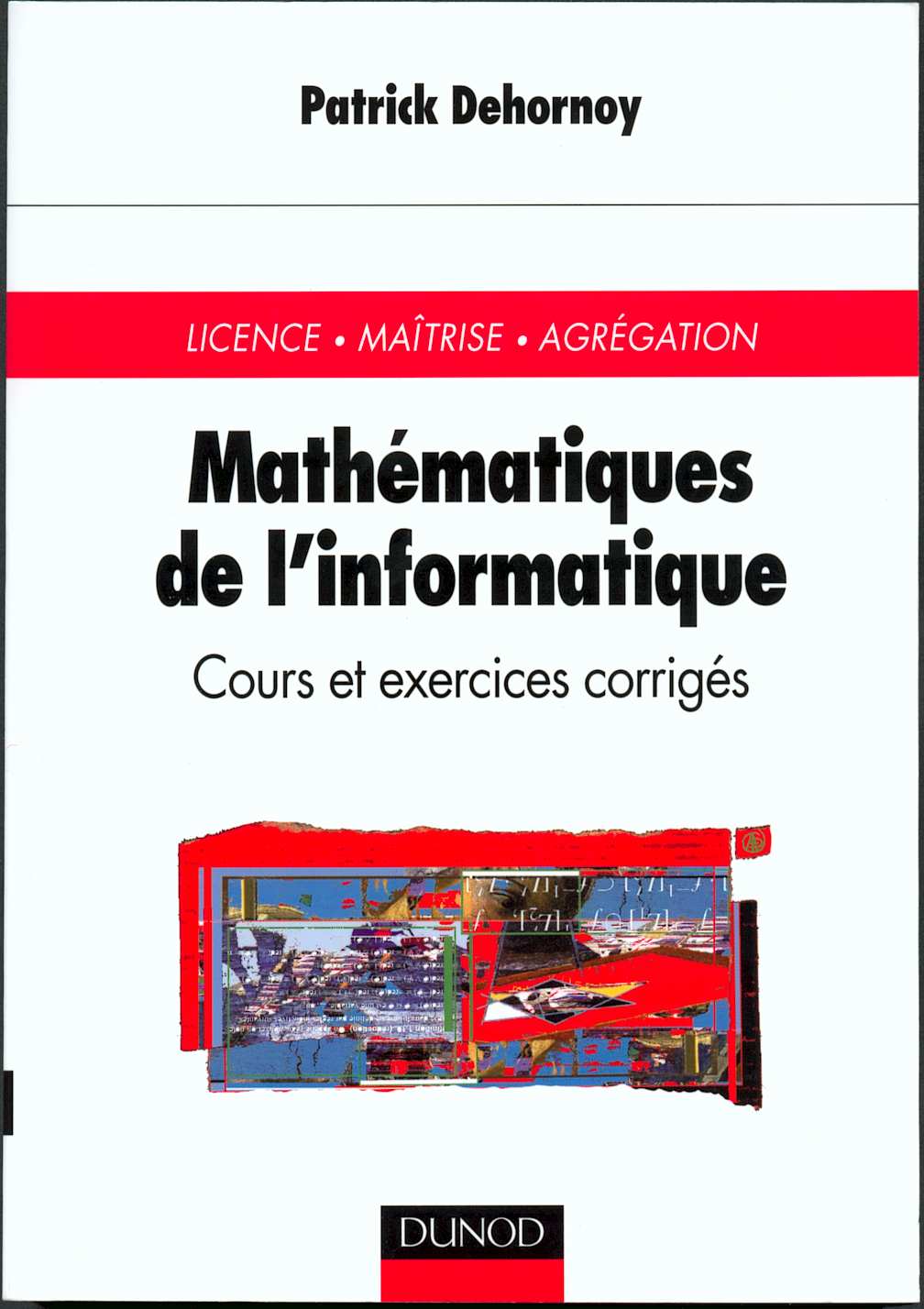
|
|
Complexité et décidabilité
Collection Mathématiques et applications; 208 pages Springer (1993) Cet ouvrage présente, d'une facon concise mais avec des démonstrations complètes qui ne supposent aucune connaissance antérieure du sujet, un certain nombre de résultats fondamentaux de la théorie de le complexité des algorithmes en liaison avec la logique.
|
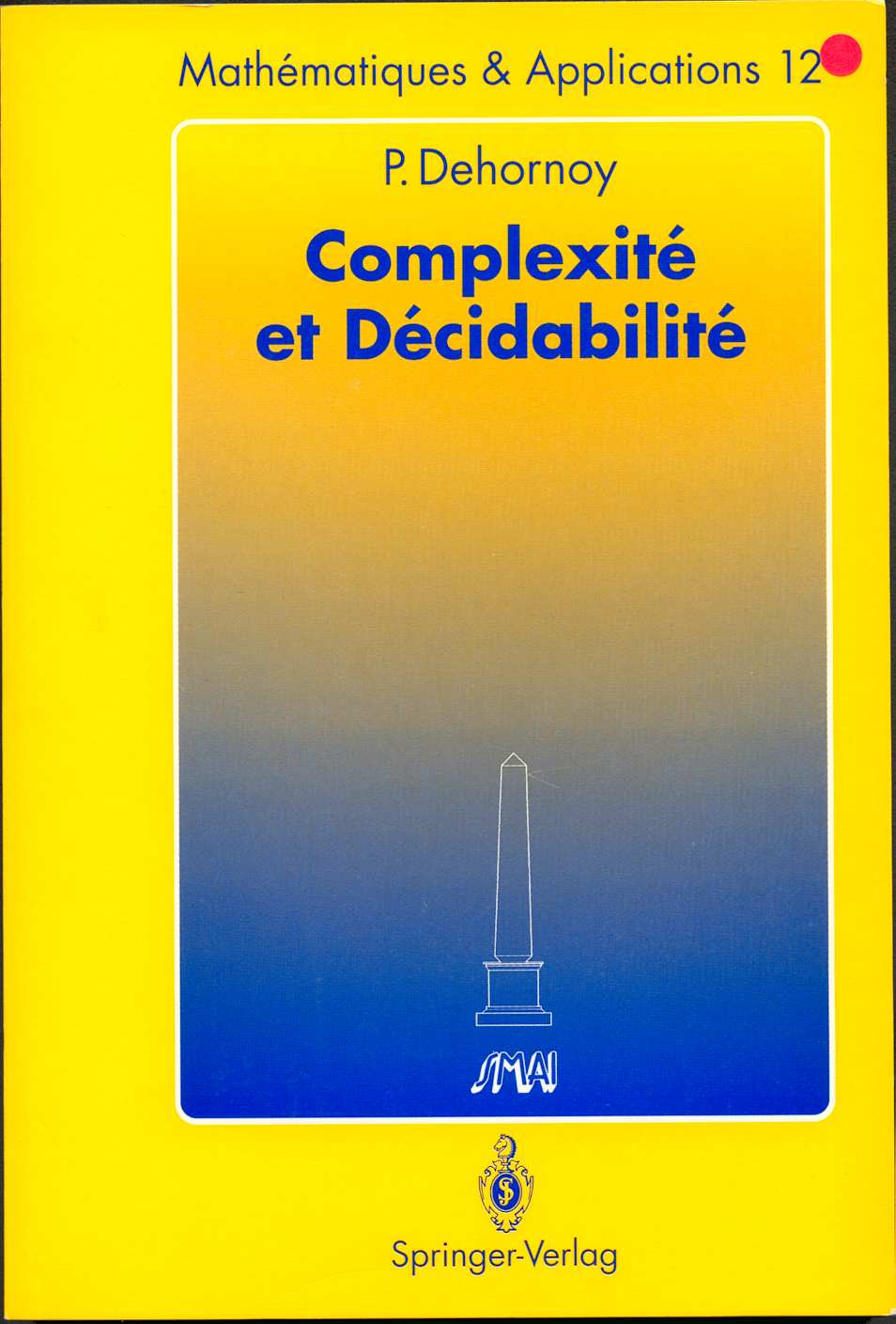
|
| ||||||||||||